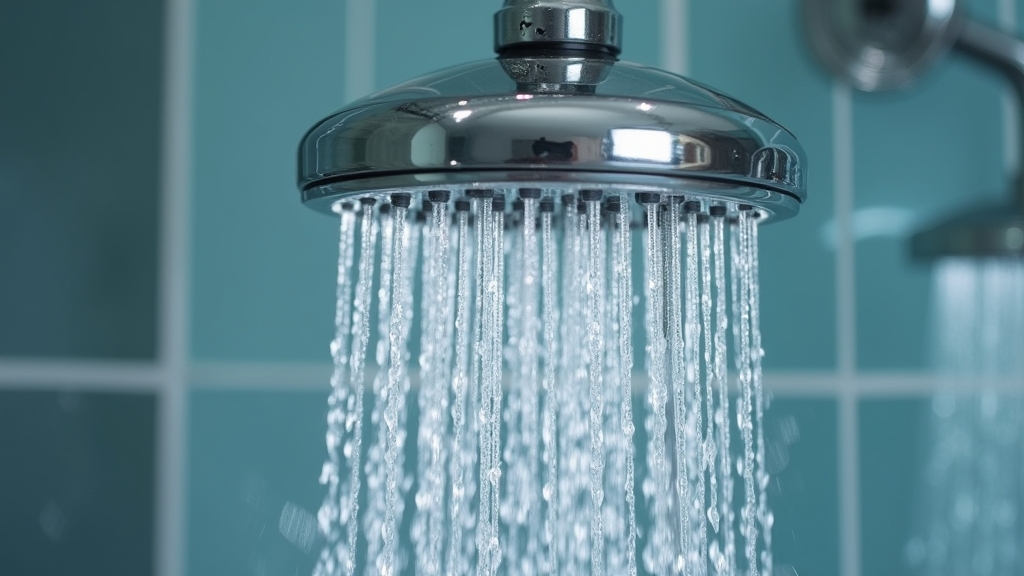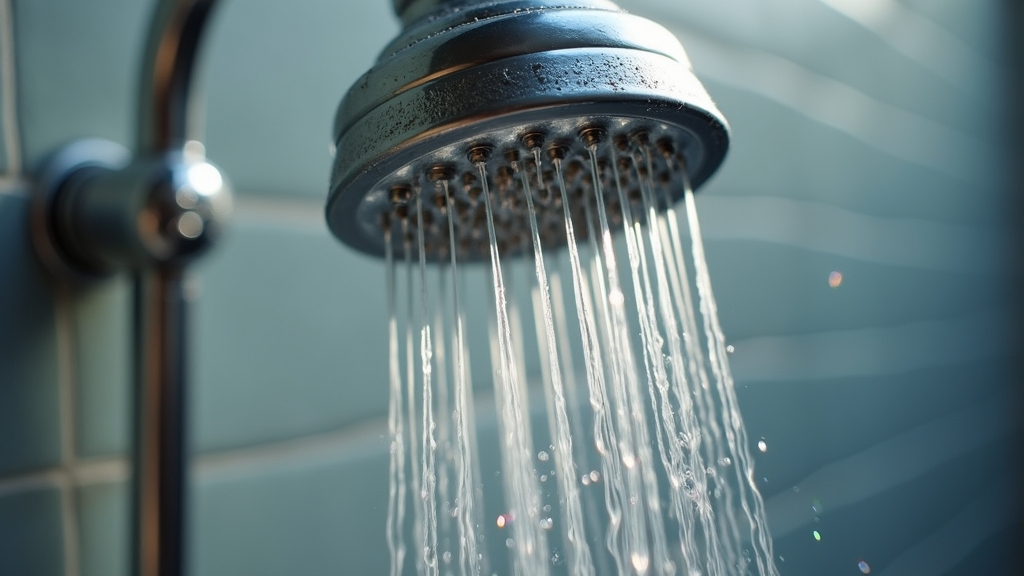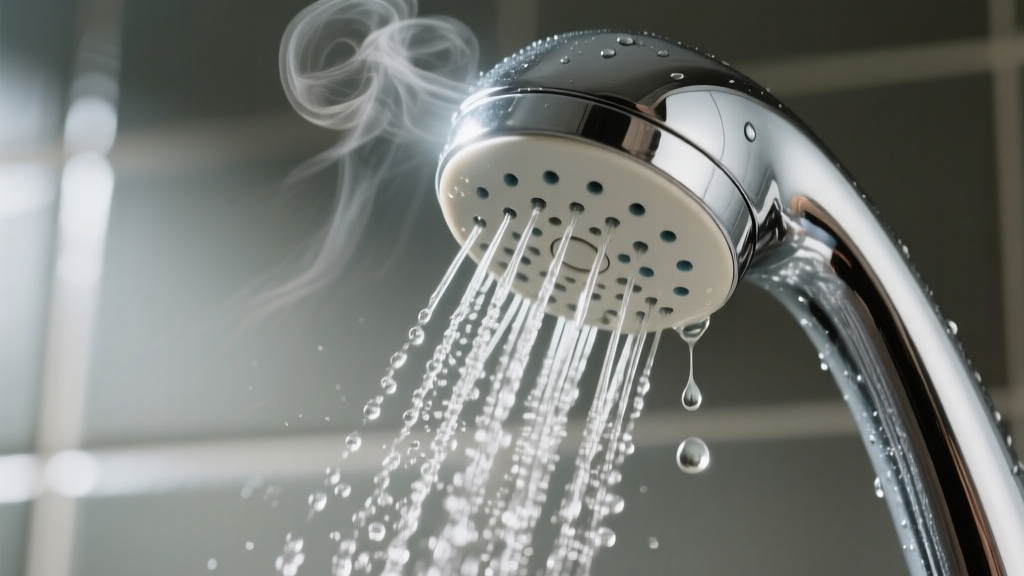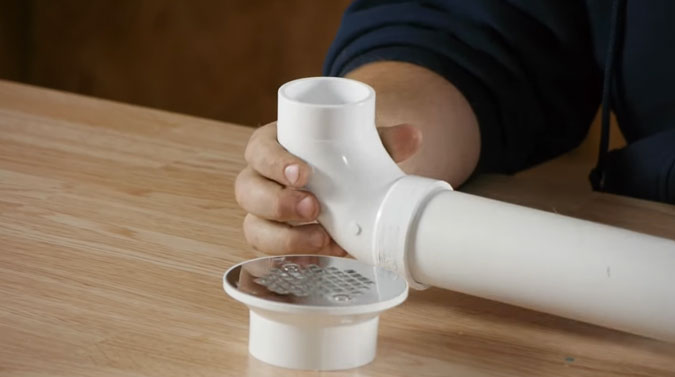Your shower whistles because disrupted water flow creates vibrations and airflow noises. This often happens from mineral buildup narrowing passages or worn valve cartridges letting air escape.
High water pressure forces water through tight spots, causing vibrations that produce whistling sounds. Loose shower parts or faulty diverter valves can also contribute by disturbing the steady flow.
Managing pressure, cleaning buildup, and replacing worn components usually fix the issue. Keep exploring to find precise causes and targeted solutions.
Key Takeaways
- Blocked or worn shower cartridges and mineral buildup narrow water passages, causing whistling sounds from disrupted flow.
- High water pressure forces water through tight openings, creating vibrations that produce a whistling noise.
- Loose shower arms or cracked showerheads allow air to escape, amplifying whistling sounds during use.
- Faulty valves or diverters cause pressure drops and vibrations, leading to fluctuating water flow and whistling.
- Mineral deposits trapped inside pipes and showerheads increase turbulence and air bubbles, intensifying the whistling noise.
Common Causes of Whistling in Showers

When you hear whistling in your shower, it often stems from issues within the valve and cartridge assembly, mineral buildup, loose components, pipe installation flaws, or temperature-related material expansion.
Blocked or worn cartridges disrupt water flow, causing noise, while mineral deposits narrow passages and create whistling. Loose shower arms or cracked heads allow air to escape, amplifying sounds.
High water pressure can also force water forcefully through pipes, contributing to the whistling noise. This pressure can sometimes lead to oxygen depletion in the water system, similar to environmental effects seen in other water flow contexts.
Worn cartridges and mineral buildup disrupt flow, while loose parts let air escape, intensifying shower whistling.
Improperly secured pipes vibrate during flow, generating noise inside walls. Additionally, metal parts expand with hot water, altering pressure and causing temporary whistling.
Addressing these issues requires inspecting and cleaning cartridges, descaling minerals regularly, tightening or replacing damaged components, and ensuring pipes are properly supported.
Professional plumbing help is often necessary for valve repairs due to their concealed location. Proactive maintenance minimizes noise and prevents permanent damage.
Effects of Water Pressure on Shower Noise
Although shower noise can arise from various causes, water pressure plays a critical role in generating or exacerbating whistling sounds.
High water pressure, especially above 60 psi, forces water rapidly through narrow showerhead openings, causing vibrations that produce sharp whistling. Installing a pressure-reducing valve can help manage this issue effectively.
Pressure fluctuations from varying household demand or unstable supply create shockwaves inside pipes and valves, increasing noise.
These pressure irregularities can stress plumbing, risking damage or leaks.
To reduce noise and protect your system, install pressure regulators or pressure-reducing valves to stabilize flow.
Water hammer arrestors can absorb shockwaves from sudden pressure changes, minimizing vibrations.
Regular maintenance, including inspection of valves and regulators, helps prevent noise caused by worn or loose parts.
Properly sized piping that complies with building codes is essential to maintain quiet and efficient plumbing performance by avoiding excessive noise from pipe size.
Securing pipes also reduces vibration-induced sounds, ensuring quieter, safer shower operation.
Impact of Mineral Buildup and Hard Water

Since hard water contains high concentrations of minerals like calcium and magnesium, you’ll often find mineral buildup inside your showerhead and pipes. This buildup clogs tiny holes, restricting water flow and increasing local pressure, which causes whistling sounds.
Mineral deposits also accumulate inside the pipe arm, worsening blockages and noise. To address these issues effectively, consider:
- Soaking showerheads in white vinegar or baking soda solutions overnight to dissolve deposits.
- Regularly cleaning shower components to prevent hardened scale formation.
- Installing water softeners to reduce mineral content in your supply.
- Monitoring for trapped air bubbles behind mineral scale that increase turbulence.
- Replacing encrusted parts when cleaning proves insufficient.
Additionally, mineral deposits from hard water can clog tiny holes in the showerhead, which often leads to increased water pressure and whistling noises due to the clogged nozzles.
Proper maintenance and treatment can help avoid mineral buildup damage to plumbing fixtures. This approach maintains proper flow dynamics, reduces whistling, and prolongs component lifespan despite hard water challenges.
Identifying Issues With Valves and Showerhead Components
Mineral buildup can disrupt water flow, but issues with valves and showerhead components often directly affect pressure, temperature, and operation.
You might notice difficulty switching water flow from tub to showerhead, signaling a worn diverter valve that may cause leaks and pressure drops. A faulty diverter can also cause both the tub spout and showerhead to release water simultaneously, indicating diverter malfunction.
If your shower handle is hard to turn or water temperature fluctuates abruptly, worn valve seals, cartridges, or corrosion could be the culprits. Regular maintenance and inspection can prevent severe damage to these internal components.
Water running after shutoff often points to degraded cartridge O-rings or seals, risking leaks behind the wall.
Persistent dripping after turning off the shower usually signals worn O-rings or seals needing prompt attention.
Fluctuating pressure during use typically indicates valve malfunction, affecting hot-cold mixing accuracy.
Leaks near valves raise water bills and risk structural damage.
Solutions and Maintenance Tips to Eliminate Shower Whistling
If your shower whistles, start by cleaning mineral deposits and blockages that restrict water flow. Soak the showerhead overnight in white vinegar to dissolve lime buildup. Use a plumbing snake for stubborn pipe deposits.
Next, regulate water pressure by installing a pressure-reducing valve or consulting a plumber for adjustments. High or low water pressure can often create noise issues in showers.
Purge trapped air by running cold water through all faucets and ensuring tight closures. Maintain your system with routine inspections and timely replacement of worn components.
Key actions to eliminate shower whistling:
- Soak showerhead in vinegar overnight
- Use plumbing snake for pipe blockages
- Install or adjust pressure-reducing valve
- Purge air by running all faucets
- Schedule regular maintenance and inspections
If noise persists, call a professional plumber for diagnosis and repair.
Frequently Asked Questions
Can My Shower Whistle Cause Damage to Plumbing Over Time?
Yes, your shower whistle can cause damage over time.
The whistling often signals high water pressure or partial clogs, which stress pipes and fittings, increasing leak risks.
Continuous vibration may loosen joints and wear out valves prematurely.
Ignoring it can lead to costly repairs and reduce plumbing lifespan.
You should address the issue promptly by checking pressure levels and clearing blockages to protect your plumbing system effectively.
Is Shower Whistling Related to My Home’s Water Heater Function?
Imagine your plumbing as a symphony; your water heater is one instrument influencing the whole orchestra.
Yes, shower whistling can relate to your water heater’s function, especially if pressure imbalances or sediment buildup disrupt flow.
To fix this, flush the heater regularly, check the temperature and pressure relief valve, and verify all connections are tight.
Addressing these issues keeps your water system humming smoothly without unwanted whistles.
Do Different Showerhead Materials Affect the Likelihood of Whistling?
Yes, different showerhead materials markedly affect whistling likelihood.
Lower-quality plastics and inexpensive metals tend to vibrate or wear out, increasing noise.
Premium materials like stainless steel or solid brass ensure tighter fittings and smoother water flow, reducing whistling.
They resist mineral buildup and corrosion, maintaining consistent pressure and minimizing turbulence.
Choosing durable, corrosion-resistant materials and maintaining them properly helps you prevent whistling caused by leaks, vibrations, or clogged nozzles.
Can Seasonal Changes Influence Shower Whistling Sounds?
Of course, your shower loves to serenade you differently each season. It’s just expressing its artistic flair.
Jokes aside, yes, seasonal changes impact whistling by causing temperature shifts that expand or contract pipes, altering water pressure.
You should monitor pressure changes and clean mineral buildup regularly.
Secure loose pipes and inspect valves seasonally to prevent whistling. If it persists, call a plumber to diagnose hidden issues before your shower starts composing symphonies.
Are Ultrasonic Cleaners Effective for Removing Showerhead Mineral Deposits?
Yes, ultrasonic cleaners are highly effective at removing mineral deposits from showerheads.
They use high-frequency sound waves to create microscopic bubbles that penetrate tiny crevices, dissolving limescale efficiently, especially when combined with warm, acidic solutions like citric acid.
This method outperforms traditional soaking by saving time and restoring near-new appearance.
For best results, you should perform multiple cleaning cycles if buildup is heavy and maintain regular ultrasonic cleaning to prevent scale accumulation.
From Whistle to Whisper: Make Your Shower Run Smoothly Again
If your shower whistles, you’re not alone. Up to 30% of homeowners report similar issues caused by high water pressure or mineral buildup. To fix it, regularly clean your showerhead and check valve components for wear.
Adjusting water pressure or replacing faulty parts can eliminate the noise effectively. By staying proactive with maintenance, you’ll guarantee a quieter, more efficient shower experience without costly repairs down the line.


